Quercetin is one of the thousands of phytochemicals, or phenolic compounds, naturally occurring in various plants. It is broadly classified as a flavonoid and more specifically as a flavonol. All phenolic compounds contain at least one aromatic ring with one or more hydroxyl groups.1 Flavonols, not to be confused with flavanols, have a double bond between C2 and C3 and a ketone group at C4. Flavonols are one of the most common flavonoid subgroups and quercetin has at least 279 different glycosidic (sugar group) combinations.2
As a supplement, quercetin is usually in the aglycone form - without a sugar group which is poorly absorbed; it can also be found in the rutin or a glycosidic form.3 Quercetin glucosides, such as isoquercitrin and isoquercetin, have been shown to be much more bioavailable and more quickly absorbed than quercetin aglycone or quercetin glycosides, such as rutin (quercetin rutinoside.)4-8 These quercetin glucosides have been shown to be more highly bioavailable than the smaller quercetin aglycone or the larger quercetin glycosides such as rutin (quercetin rutinoside.)4 The absorption of dietary quercetin and any potential health benefits are influenced by the source and amount consumed, as well as bioavailability.9 Quercetin, like other flavonoids, undergoes first pass metabolism when consumed leading to metabolites in circulation.10
Flavonoids were originally assumed to scavenge free radicals. This assumption, due to the likelihood that metabolites have different actions than the original form and concentration levels in vivo, has given way to cell signaling pathways as the method of exerting biological effects.11 Quercetin metabolites may affect membrane permeability, eicosanoid biosynthesis, and inhibition of reverse transcriptase; membrane associated enzymes such as ATPase, phospholipase A2, and prostaglandin cyclooxygenase may be inhibited.*12
Quercetin Dosing Guidelines
Quercetin is regarded as well tolerated when used appropriately. At dosages ranging from 3 mg to 1000 mg per day, clinical studies have not demonstrated significant adverse effects. High doses, equivalent of approximately 3591 mg, were associated with renal toxicity; however, in a phase I study subjects were given dosages from 2000 mg to 5000 mg per day and did not show evidence of adverse events or signs of toxicity.6,13 Moderate caution should be used when combining quercetin with certain prescription medications, based on B level evidence of possible interactions (non-randomized clinical trials).14 Large amounts of dietary quercetin are not associated with any adverse effects, likely due to the low bioavailability in food and rapid metabolism and elimination.6
REFERENCES
- Rio, D et al. Antioxidants & Redox Signaling, 18(14), 1818-92.
- Tsao, R. et al. Nutrients, 2(12), 1231-46.
- Larson, A. J. et al. Advances in Nutrition: An International Review Journal, 3(1), 39-46.
- Arts IC et al. Br J Nutr 2004;91(6):841–7.
- Boyer J et al. Nutr J 2005;4:1.
- Morand C et al. Free Radic Res 2000;33(5):667–76.
- Olthof MR et al. J Nutr 2000;130(5):1200–3.
- Erlund I et al. Eur J Clin Pharmacol 2000;56:545–53.
- Manach, C et al. American Journal of Clinical Nutrition, 727-47. Retrieved from http://ajcn.nutrition.org/content/79/5/727.full.
- Lotito, S et al. Free Radical Biology and Medicine, 51(2), 454-63.
- Flavonoids. (2016). Retrieved October 17, 2016, from http://lpi.oregonstate.edu/mic/dietary-factors/phytochemicals/flavonoids/.
- Formica, J et al. Food and Chemical Toxicology, 33(12), 1061-80.
- Lu, N et al. Phytother. Res. Phytotherapy Research, 30(1), 160-8.
- Natural Medicines - Quercetin. (n.d.). Retrieved October 17, 2016, from https://naturalmedicines.therapeuticresearch.com/databases/food,-herbs-supplements/professional.aspx?productid=294#interactionsWithDrugs.

